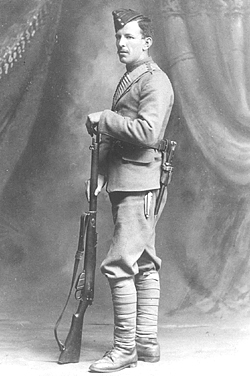Weapons
The Lee-Enfield .303 Mk. I Rifle

The Lee-Enfield .303 Mk. I was introduced into the British Army in 1895 and in Canada the year following. It replaced the Lee-Metford, which had been the standard issue firearm since 1889. The latter was a magazine-fed repeating rifle, but it fired cartridges using black powder which emitted smoke when fired that gave away the rifleman's position. In 1891, the British first produced cordite a propellant that burned cleanly without emitting smoke. It also generated more heat, however, which wore out the Lee-Metford's rifling system of seven shallow grooves. A new rifling system was developed at the Royal Small Arms Factory, Enfield, consisting of five deep grooves that could withstand the intense heat generated by the cordite. The result was the .303 Lee-Enfield Mk. I rifle, in all respects identical to the Lee-Metford except for the rifling.
The new rifle, which the Canadian troops took with them to South Africa, weighed a rather heavy 4.3 kilograms (nine and a half pounds) and had a range of 1,645 metres. The magazine could hold ten rounds, but it lacked a clip or charger, which meant that when expended, it had to be reloaded a single round at a time.
Improved versions of the durable Lee-Enfield went on to serve as the standard rifle of the British Empire/Commonwealth during the First and Second World Wars.
